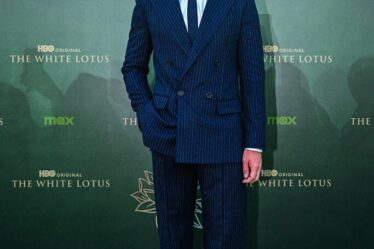
In late January, after speculation that anyone from Tom Ford to Harry Styles would succeed Alessandro Michele at Gucci, owner Kering revealed that behind-the-scenes Valentino designer Sabato De Sarno would take the role, prompting some to wonder whether the age of the star designer was well and truly over and if an indie favourite like Martine Rose or Kidsuper could succeed Virgil Abloh at Vuitton. That didn’t happen.
This week, parent company LVMH dropped the bomb that celebrity music producer Pharrell Williams would take the creative helm at Vuitton’s men’s business, suggesting that there are competing theories on the best way to grow a fashion brand in 2023.
Today, the fashion world is surfing a transition in how people relate to brands and products. If you zoom out, a market long dominated by mass phenomena is evolving, largely on the back of technological change. From the 2010s to the 2020s, what we’ve seen is a shift from mass markets to niches, from cultural centralisation to cultural decentralisation.
If Meta and its billions of users defined the 2010s, then the influential nooks on OpenSea, Discord and Substack are defining the 2020s. It’s not to say that mass cultural phenomena aren’t going strong. 150 million Charli D’Amelio followers don’t lie. But in an ultra-competitive attention economy, there’s more innovation happening at the level of thousands, not millions.
In fashion, the trend toward decentralisation is equally strong. Fashion in the 2010s took place via Condé Nast and then Instagram. But in fashion media today, the aquifers of influence are more distributed — across everything from cult newsletters like Opulent Tips and Blackbird Spyplane to the product pages of gate-kept Grailed and Depop resellers or, best of all, whatever group chat you’re lucky enough to get invited to. I’ve begun referring to this phenomenon as “hyper-nichification,” because of the high potential to be found in smaller numbers.
Vuitton’s Pharrell Williams appointment is indicative of a playbook that was perfected in the 2010s, one that allows luxury brands to hold their own in the attention economy by leveraging high-profile creative talent. Despite shifts in culture, the move makes sense for a brand that now generates more than €20 billion in annual revenue and will need to extend its audience still further to find future growth. Williams’ output will no doubt be approachable, splashy and packed with good vibes and high-profile collaborations that keep the industry’s biggest brand firmly in the conversation and in front of new prospective consumers.
And yet, increasingly, there is a powerful route to relevance that’s more about tapping a loyal cohort of followers than appealing to the masses, that’s more about depth than breadth.
The example par excellence is Rick Owens, who despite having a fairly unflinching aesthetic for nearly three decades, has become a patron saint of Gen-Z. Brands like Thom Browne, Bode and The Row, too, have leaned into the idea that specificity is not a curse but an opportunity to tell deeper stories and forge relationships with customers rooted in shared values. Buying a Rick Owens cape or a Bode frock is less a transaction than a subscription to an aesthetic universe.
The notion of tapping a niche isn’t new. Fashion labels have long traded on cult-like followings. But shifts in media-technology make it more viable to attract, nurture and scale a tribe-like community than perhaps ever before.
The bottom line: growing wide (mass) or growing deep (hyper-niche) can both work. In fact, they can sometimes even work together — and this may be the gold standard for brand building in 2023. The late Virgil Abloh had both celebrity star power and an uncanny ability to cultivate niches a niche of loyal followers across key subcultures. Does Pharrell?
Thom Bettridge is an editor and creative director, and the head of creative and content at Ssense.
The views expressed in Op-Ed pieces are those of the author and do not necessarily reflect the views of The Business of Fashion.
How to submit an Op-Ed: The Business of Fashion accepts opinion articles on a wide range of topics. The suggested length is 700-1000 words, but submissions of any length within reason will be considered. All submissions must be original and exclusive to BoF. Submissions may be sent to opinion@businessoffashion.com. Please include ‘Op-Ed’ in the subject line and be sure to substantiate all assertions. Given the volume of submissions we receive, we regret that we are unable to respond in the event that an article is not selected for publication.



